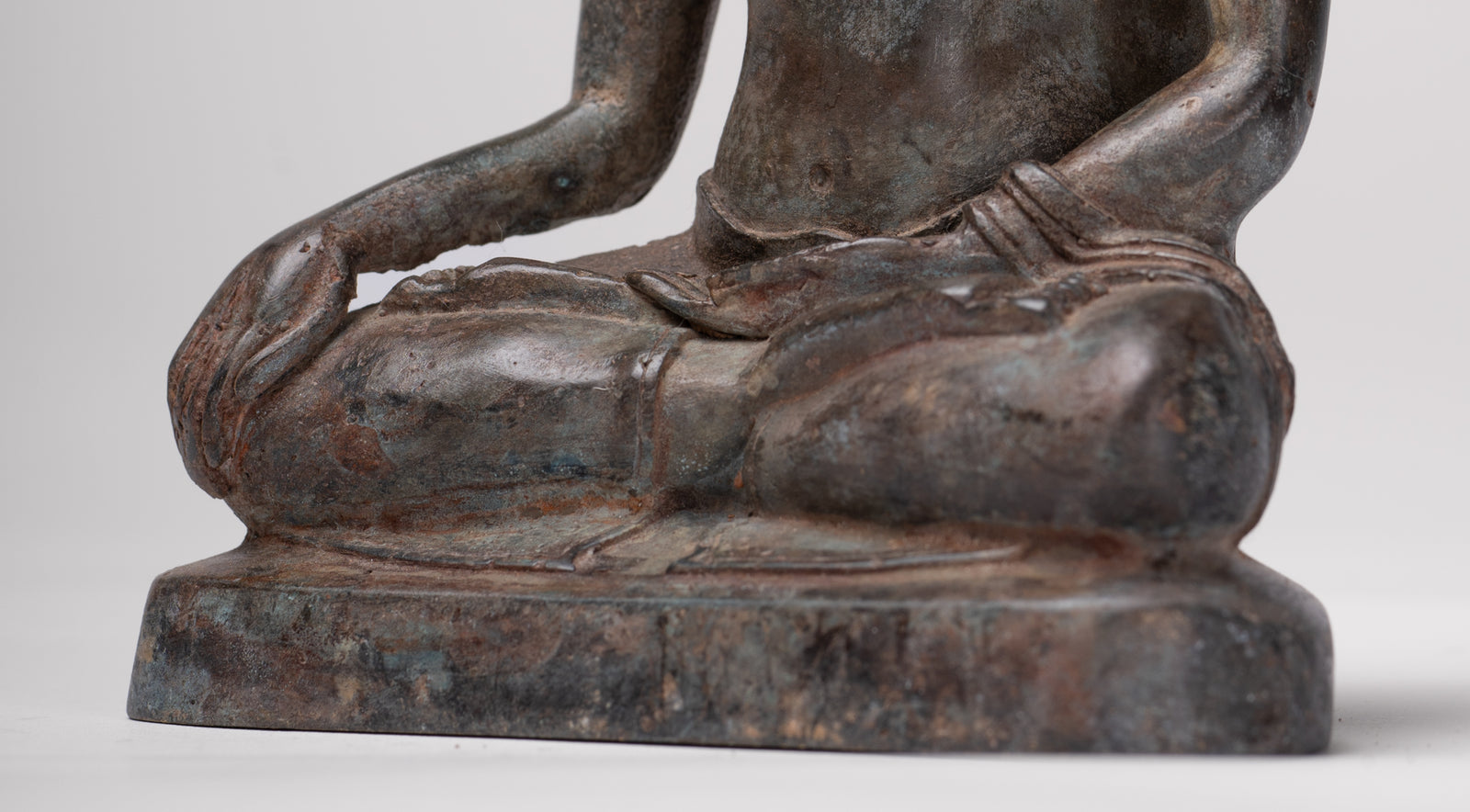
Les bouddhistes rejettent-ils le monde? Comprendre la relation du bouddhisme avec la vie mondaine
L'une des idées fausses les plus courantes sur le bouddhisme est qu'elle implique un rejet du monde. Des images de moines ascétiques méditant dans la solitude ou des renoncteurs laissant derrière eux des biens matériels conduisent souvent à l'hypothèse que le bouddhisme préconise un déni de gros de la vie mondaine.
S'il est vrai que le bouddhisme encourage le détachement, cela n'équivaut pas au rejet. Au lieu de cela, le bouddhisme offre une perspective nuancée qui cherche à transcender la souffrance tout en comprenant pleinement et en s'engageant avec la nature de l'existence.
Comprendre le détachement dans le bouddhisme
Au cœur de la philosophie bouddhiste se trouve le concept de détachement, souvent mal compris comme un rejet du monde. En réalité, le détachement fait référence à l'absence de s'accrocher, à avoir envie et à l'attachement - les sources de souffrance comme indiqué dans les quatre nobles vérités.
-
Quel détachement est: Le détachement est la capacité de s’engager avec les expériences de la vie sans être asservis par des désirs, des aversions ou des délires. Il s’agit de cultiver l’équanimité et la paix intérieure, même au milieu des hauts et des bas de la vie.
-
Quel détachement n'est pas: Le détachement ne signifie pas l'indifférence ou l'apathie. Le bouddhisme ne préconise pas la désengagement des responsabilités, des relations ou du monde en général. Au lieu de cela, il encourage une approche équilibrée et consciente de la vie.
La voie médiane: éviter les extrêmes
Les enseignements du Bouddha mettent l'accent sur la voie médiane, un chemin qui évite les extrêmes de l'indulgence et de l'auto-mortification. Ce principe s'applique non seulement aux pratiques physiques mais aussi à sa relation avec le monde.
-
Éviter l'indulgence: Le bouddhisme met en garde contre l'attachement excessif aux plaisirs sensuels, car ils sont éphémères et finalement insatisfaisants.
-
Éviter le déni: D'un autre côté, le bouddhisme rejette l'ascétisme extrême comme inutile et contre-productif. La voie médiane encourage la vie avec la pleine conscience et la modération.
Le rôle du monachisme
La vie monastique est souvent considérée comme un renoncement au monde, mais même pour les moines et les religieuses, l'objectif n'est pas le rejet mais la transformation. En adoptant une vie de simplicité, les monastiques visent à:
-
Concentrez-vous sur le développement spirituel sans les distractions des activités matérielles.
-
Servir de source d'inspiration et d'orientation pour les praticiens laïcs.
Le monachisme représente une façon de pratiquer le bouddhisme, mais ce n'est pas le seul moyen. Les pratiquants profanes sont également encouragés à parcourir le chemin tout en restant pleinement engagé dans leurs communautés et leurs responsabilités.
S'engager avec le monde par la pleine conscience et la compassion
Pour les bouddhistes laïques, la pratique consiste à s'engager avec le monde avec conscience et par compassion. Le bouddhisme enseigne que la vie mondaine offre d'innombrables possibilités de croissance spirituelle et de culture de vertus telles que la générosité, la patience et la gentillesse.
-
La pleine conscience dans la vie quotidienne: En étant pleinement présents à chaque instant, les bouddhistes peuvent naviguer dans les défis de la vie mondaine avec clarté et sang-froid.
-
Compassion pour tous les êtres: Loin de rejeter le monde, le bouddhisme encourage la compassion active et l'altruisme. L'idéal Bodhisattva, au centre du bouddhisme mahayana, illustre cela en aspirant à aider tous les êtres à obtenir la libération.
-
Association des moyens de vie: Une partie de la voie en huit, les moyens de subsistance, met l'accent sur la vie d'une manière éthique et contribue au bien-être des autres.
Transcendant, ne rejetant pas
Le bouddhisme enseigne que l'objectif ultime est de transcender le cycle de la souffrance (samsara) et d'atteindre l'illumination (nirvana). Cependant, cette transcendance ne consiste pas à échapper ou à rejeter le monde; Il s'agit de le voir clairement pour ce qu'il est: impermanent, interdépendant et intrinsèquement insatisfaisant lorsqu'il est accroché.
Grâce à cette compréhension, les bouddhistes apprennent à:
-
Appréciez la beauté de la vie sans y être attachée.
-
Contribuer positivement au monde tout en reconnaissant sa nature transitoire.
-
Trouvez la libération à l'intérieur, plutôt que de la chercher à l'extérieur.
Conclusion: une perspective équilibrée
Les bouddhistes ne rejettent pas le monde mais cherchent à s'engager avec sagement et par compassion. Les enseignements du Bouddha fournissent des outils pour naviguer dans la complexité de la vie tout en réduisant la souffrance pour soi-même et les autres.
Le détachement, la pleine conscience et la voie médiane forment un cadre pour vivre une vie significative qui embrasse le monde sans être pris au piège.
Loin d'être une évasion, le bouddhisme offre un chemin vers une compréhension, une connexion et une paix intérieurs plus profondes dans le tissu même de l'existence du monde.


